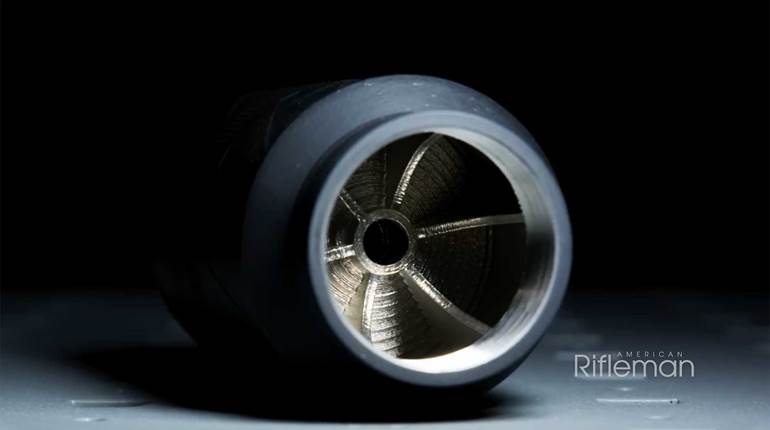
The process for bringing a new editor onto the staff of American Rifleman usually involves reviewing previous written work, various tests of editing skill and firearm knowledge, then, of course, interviews. The latter cannot always be done in person, so we found ourselves interrogating a prospective associate editor in Texas via Skype.
Toward the end, my colleague Brian Sheetz asked then-candidate Kelly Young, “What’s your favorite gun?” Kelly’s reply came via fishing around below the camera’s view and pulling out a Fabrique Nationale PS90, chambered for the 5.7x28 mm FN cartridge. Kelly didn’t know that his choice of carbine—he’s unrepentantly left-handed, by the way—told us a lot about him. Enough so that, combined with his skill set, within a month he had a job offer.
That was five years ago, and now Managing Editor Kelly Young has two features in this issue alone. One is on the new Ruger-57 pistol (read our Ruger-57 review here), the first major introduction of a firearm chambered for the 5.7x28 mm FN in more than a decade. Until this time the only handgun available has been the innovative FN Five-seveN pistol, now in its Mk2 configuration, (americanrifleman.org/fnmk2). Its design, which features metal slide components encased in polymer, no external frame rails and a T-shaped rail running through the top center of the polymer receiver, is unusual to say the least, and its unusual lines and a safety located on the frame above the trigger are somewhat dated.
As Kelly ably describes in his story, there’s been much “chicken or egg” discussion about the 5.7 mm cartridge. The military SS1019 ammunition is not available to civilians in the United States, and while there are a small number of loads including those from FN, Fiocchi and an American Eagle FMJ, there have been few guns. They include those from FN, the AR-57 and the CMMG Banshee (for more on the latter and other CMMG guns, see Kelly Young’s other story beginning on p. 50).
But now Speer has changed the dynamics for owners of guns chambered in 5.7 mm—including the Ruger-57. One of the top personal-protection ammunition lines in the country is Speer’s Gold Dot, and it now includes a 40-gr. jacketed hollow point in 5.7 mm. Out of the Ruger-57’s 4.9" barrel, the 40-gr. Gold Dot had a velocity of 1790 f.p.s., delivering 285 ft.-lbs. of energy. Out of a very similar length barrel (4.86"), Federal’s 9 mm Luger Hydra-Shok 124-gr. JHP moves out at 1063 f.p.s., delivering 311 ft.-lbs.
Few doubt the efficacy of the 9 mm these days as a defensive cartridge, but some find it too much in the way of perceived recoil. In a December 1999 article, author Dan Shea pointed out the 5.7 mm’s recoil impulse was about 70 percent less than that of the 9x19 mm NATO; the energy doesn’t go away, obviously, the pistol (in the article an FN Five-seveN) just has a different recoil impulse. Those with a sensitivity to recoil may want to give the 5.7x28 mm FN a look as there is now a serious defensive loading available.
That’s something the 5.7x28 mm FN has not had a lot of recently—looks—let alone a second chance. I, for one, never thought this little cartridge received a fair shake. In the early 2000s I lobbied FN management to add a bull-barreled bolt-action chambered in 5.7x28 mm FN to its SPR line. It seemed to me the little cartridge would make for a great varmint and predator gun. My pleas, perhaps rightly, fell on deaf ears.
Judging from the initial response, Ruger has a winner with this platform. And I suspect other gun companies will follow with new models of 5.7x28 mm FN pistols and carbines, leading to far greater acceptance of this interesting little cartridge. Who knows, maybe I’ll finally get that bolt gun after all.





































